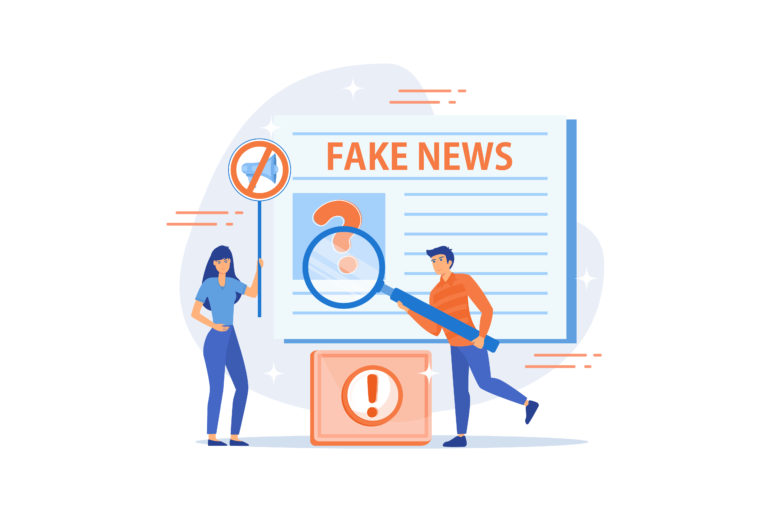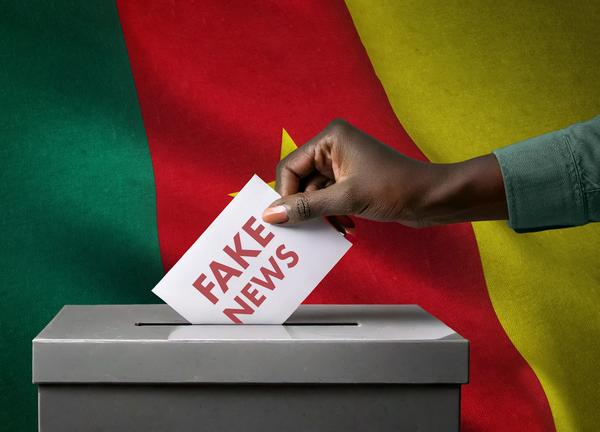The different stages of production of a fake news
What if you were given the recipe to create a good fake news? The objective here is to show how the manipulation of information and the creation of false news are simple processes and within everyone's reach. It is essential to help Internet users more easily detect this kind of content on social networks. You can also become a Debunkage professional with this article . This may encourage them to be more cautious when they consult or discover daily information.

To develop your critical look at information, here is the recipe for creating a fake news:
1️⃣ Choose the subject of fake news: policy, health, economics, education, environment, etc.
2️⃣ collect information and arguments to manipulate information. For example, it is possible to resume serious and proven articles to get the sentences out of their context or distort them.
3️⃣ Use catchy titles to gain attention and play on emotions. Write keywords in capital letter to support your words. For the visual aspect, it is also possible to touch up photos or fake videos. Images are particularly effective supports in the dissemination of fake news. They have a power of fascination and shortcut instead of the text.
4️⃣ Invented testimonies as well as blurred or false figures can be cited to gain credibility.
5️⃣ Fake News must cause interest. The more the story is amazing, the more it diffuses. Most often, these are celebrities or a candidate in the presidential elections who are mixed with surprising stories to harm their reputation.
6️⃣ make the origin of the vague source in order to be more difficult to verify.
7️⃣ Create controversy to denounce the censorship or conspiracies that are exercised on this information.
An incredible story is not necessarily a fake news. But with taking into account all of these elements, you must remain vigilant in order to avoid spreading lies or erroneous information

The means of dissemination of a fake news
Facebook, Twitter, Instagram, YouTube… Fake News are gaining momentum with social networks . They broadcast them and multiply them endlessly in a few seconds. For a fake news to spread, it is necessary:
1️⃣ Choose the target of disinformation. The more this target is sensitive to the message carried by the fake news, the more the content will be shared and reused if it triggers emotions such as anger, revolt, fear or insecurity, etc. With a lot of commitment from Internet users (like, comments, sharing, etc.), algorithms will also relay this information and therefore give it more visibility.
2️⃣ Make the information precious by adding terms like "what you are hidden", "before censorship". They can attract more curious Internet users.
3️⃣ Use trolls with trolls or bots so that they relay you en masse in order to touch a wider audience. Indeed, trolls and bots can overwhelm the social networks of spam and fake news. The goal is to amplify messages and artificially create popularity around false content.
Messinterpretation, exaggeration of facts, malicious intention ... deceptive or manipulated information can easily generate audience. To stem this phenomenon, the secret lies in an in -depth study of their origin and their mode of propagation. We must also learn to be wary of false profiles on social networks thanks to our article on the subject.
Other cogs to better counter Fakes News
Transform yourself into "checkautes" or "fact-check"! Fact-checking is analyzing a number of elements that will determine the authenticity or not of information. To stop the dissemination of harmful information, here are the latest little tips to spot them ...
1️⃣ Inspect the editorial aspect. What is the level of spelling and syntax? Is the article well written or is it a bad translation? Even if that is not enough, this is a first element to know if the information and the arguments are well constructed.
2️⃣ If the article cites media or other sources, try to find these elements on the internet. Also meet the sources to confront your readings and know if the information comes from a known and serious site (gouv.fr, .org, asso.fr, etc.).
3️⃣ Check if the account or page has the certified logo. See Fact-Checking sites to find out if they have already checked the information.
4️⃣ Examine the details such as the date of update of the site and the article. This lets you know if the information is consistent with the news or if it is obsolete.
You know everything about creating a fake news. There is something to have fun and above all be wary!









